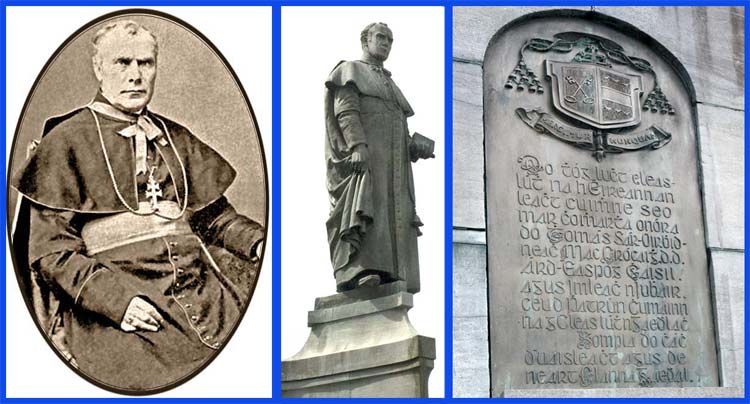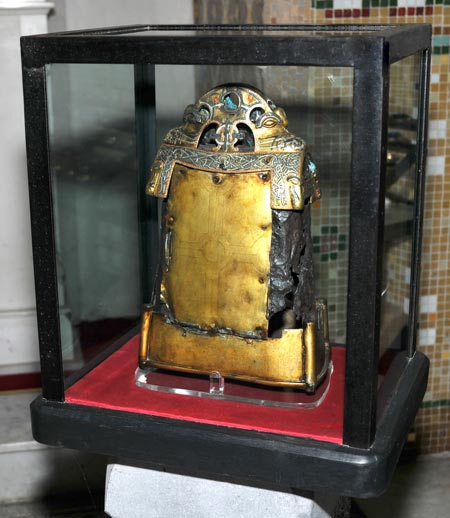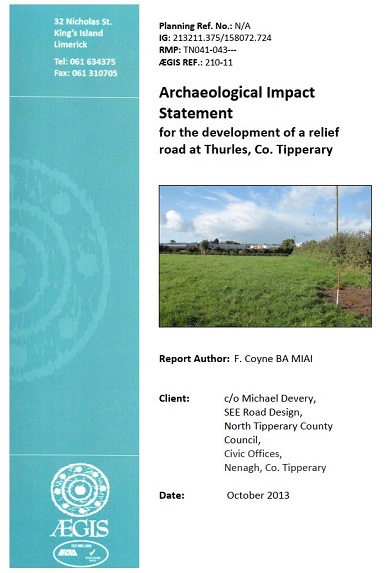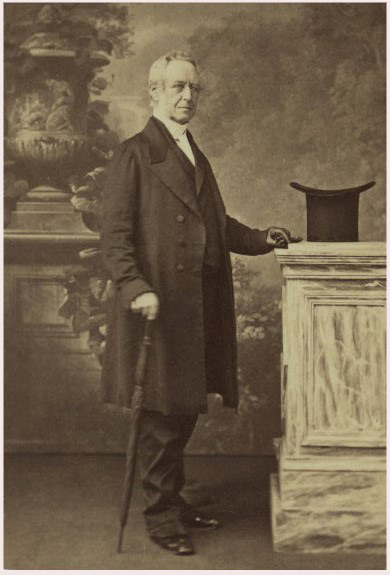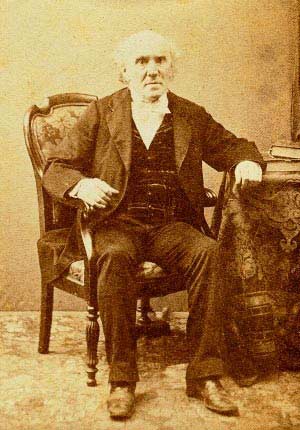One minute after Britain formally declared war against Germany, which took effect on September 3rd, 1939, a Blenheim IV of No. 139 Squadron took off to fly the first sortie of the war for the Royal Air Force. Same was a photo-reconnaissance operation. In the future these aircraft were to become involved in the defence of London and would serve with Coastal Command in anti-shipping, reconnaissance, and a variety of other roles, right up until 1942.
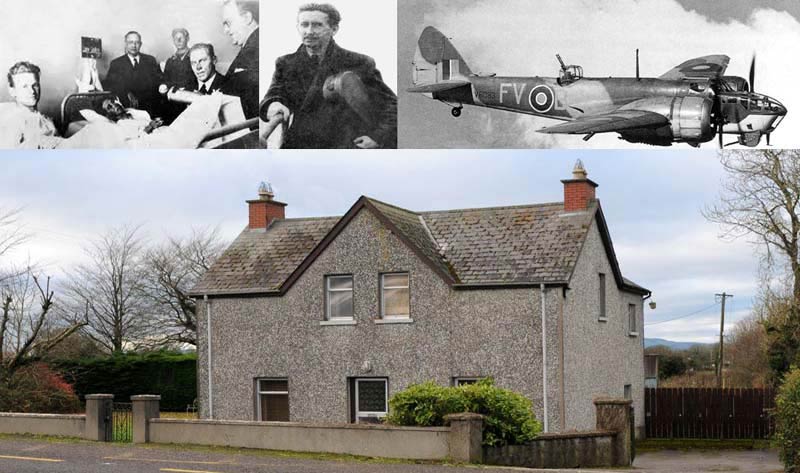
Pictures L-R (1) Laurence Slattery, Littleton Thurles, Co. Tipperary, pictured in a Berlin P.O.W hospital bed. (Celtic studies expert & Nazi propaganda radio broadcaster Dr. Hans Hartmann is to be seen standing on the left of his bed). Picture (2) Rare picture of Laurence Slattery after WW II, with a violin case under his arm. Picture (3) A Bristol Blenheim IV, which Laurence Slattery navigated. Picture (4) Today, the once home of Laurence (Larry) Slattery, and his father Michael Slattery (a National School Teacher), situated in the townsland of Ballymoreen, Littleton, Thurles, Co. Tipperary.
The fighter version of the Blenheim IV aircraft normally carried four machine guns in the bomb bay, while the standard crew would comprise of a pilot; a navigator/bomb-aimer; and a wireless operator/gunner. The navigator would sit in the nose of the aircraft at a plotting table, situated just below the port side of the canopy.
On September 4th 1939, just one day later, Laurence (Known locally by the shortened name of Larry) Slattery, a native of Littleton, Thurles, Co. Tipperary, took off on a Bristol Blenheim IV. His aircraft was later shot down over the sea at Wilhemshaven, west of Hamburg, latter a coastal town in Lower Saxony, Germany, while attempting to drop leaflets; as confirmed by Irish Military Archives.
The aircraft’s pilot, Willie Murphy, a native of Mitchelstown, Co. Cork, died some days later from his injuries, whilst Larry Slattery survived, sustaining wounds which included a broken foot and a broken jaw, latter obtained when his face struck a machine gun-turret. The pilot, Murphy would become the first recorded British fatality of World War II, and Larry Slattery from Littleton village, would became the first British Prisoner of War (P.O.W.) to be captured by the Germans.
Slattery would also go on to become the longest detained British P.O.W of the entire War, not being finally freed until Allied troops reached his prisoner-of-war camp (stalag), in April of 1945. Slattery, on his return to Ireland, later recalled that his captors were somewhat reluctant to release him, as he was deemed an excellent interpreter, when being used to communicate with his fellow prisoners.
Having married he returned to Germany for a short time, where it is suggested that he acted as a translator during part of the Nuremburg Trials.
Nuremberg, in the German state of Bavaria, had been chosen as the site for the trials of twenty-two identified WW II Nazi (National Socialist German Workers’ Party) war criminals. During the years 1945 and 1946, Judges from all four of the Allied powers (Great Britain, France, the Soviet Union, and the United States), presided over these trials.
Here in Nuremburg, twelve prominent Nazis were later sentenced to death, (Hans Frank, Wilhelm Frick, Alfred Jodl, Ernst Kaltenbrunner, Wilhelm Keitel, Joachim von Ribbentrop, Alfred Rosenberg, Fritz Sauckel, Arthur Seyss-Inquart, Julius Streicher, Hermann Göring, and Martin Bormann (The latter, in absentia, as he had died previously on a bridge near Lehrter railway station, Lower Saxony, Germany). Most of these defendants had admitting to the crimes of which they stood accused, nevertheless claiming that they were simply followed the orders of more senior authority.
Larry who was well known locally in Thurles and surrounding areas had been in the employment of a Thurles building contractor, James Skehan, before enlisting in the Royal Air Force (R.A.F). A late evening radio broadcast received here in Ireland from Berlin, reported that an aircraft had been shot down while flying low and had crashed into the sea, resulting in the capture, amusingly enough, of one “Laurence Flattery”.
Dr. Hans Hartmann would later interviewed Larry Slattery, while he lay in a Berlin hospital. Dr. Hartmann had been a member of the Nazi party since 1933 and, during the war, broadcast radio messages from Berlin to Ireland, in the Irish language. He had studied Irish and Irish Folklore in University College Dublin between 1937 and 1939, as well as having spent time earlier, in 1930, researching, learning and recording the dialects of the local people of Connemara with his mentor Professor Ludwig Muhlhausen.
“Kathleen Mavourneen”
With the outbreak of war, both men now returned to Germany and from 1939 through to the final days of the conflict in 1945, Dr. Hartmann broadcast Nazi Radio propaganda in the Irish language, hailing Ireland’s magnificent victory over the British during the War of Independence. His last broadcast in 1945 ended with (possibly a lament for how the war had turned out – do play video above) Count John McCormack’s rendering of “Kathleen Mavourneen”, (Irish meaning – Kathleen My Beloved); latter singer an Irish artist used most often in Dr. Hartmann’s many previous radio broadcasts.

